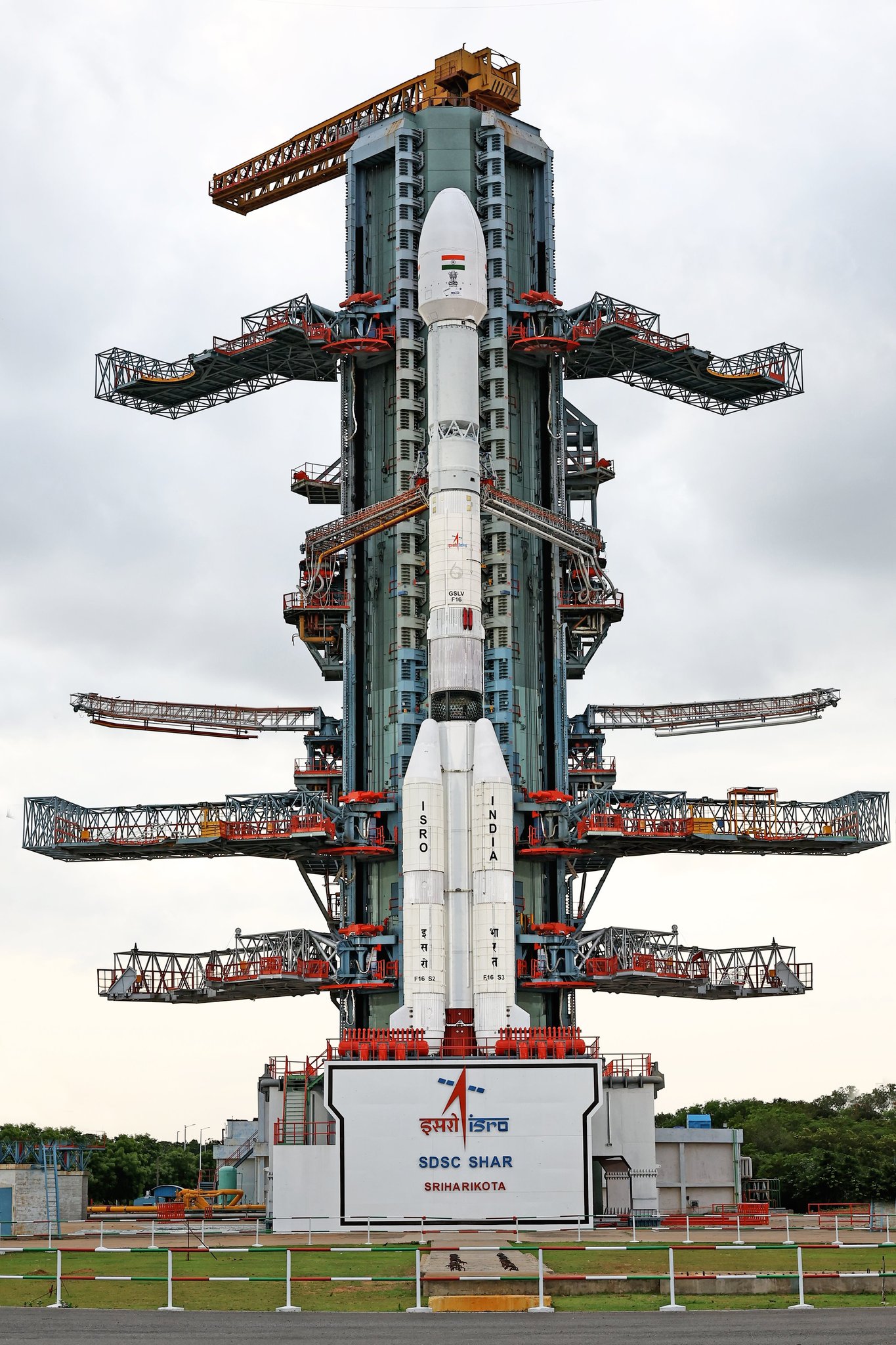
The Indian Space Research Organisation (ISRO) and NASA are preparing to launch their jointly developed Earth observation satellite, NISAR, at 5:40 PM IST on Wednesday.
The lift-off will take place from the Satish Dhawan Space Centre in Sriharikota.
Valued at $1.5 billion, the mission will likely redefine how we monitor changes on Earth’s surface, with a particular focus on tracking natural disasters and environmental shifts.
The NASA-ISRO Synthetic Aperture Radar (NISAR) satellite is a significant milestone, as it will be the first to employ dual-frequency Synthetic Aperture Radar technology, NASA’s L-band and ISRO’s S-band, to observe the planet.
These radar systems will function through a 12-metre deployable mesh reflector antenna developed by NASA and mounted on ISRO’s customised I-3K satellite bus.
Weighing 2,392 kilograms, the satellite will launch aboard India’s GSLV-F16 rocket.
Once in orbit, NISAR will occupy a sun-synchronous path at an altitude of 740 kilometres.
From this vantage point, it will scan Earth’s terrain and icy regions every 12 days, capturing high-resolution images across a 242-kilometre-wide swath using the advanced SweepSAR technology for the first time.
ISRO Chairman V Narayanan stated, “The Earth observation satellite jointly developed by ISRO and NASA will be sent into space on July 30 by the GSLV-F16 rocket made in India.”
He underscored that the satellite will provide uninterrupted imaging regardless of weather or lighting conditions.
During a media interaction at Chennai airport on Sunday night (27 July), Narayanan asserted, “It can take pictures of the Earth 24 hours a day in all weather conditions and the satellite can detect landslides, aid in disaster management, and monitor climate change.”
Contributions From NASA and ISRO
In an earlier statement, the same day, the Department of Space noted, “The NISAR mission combines the technological expertise of both agencies. NASA has contributed the L-Band Synthetic Aperture Radar (SAR), a high-rate telecommunication subsystem, GPS receivers, and a deployable 12-meter unfurlable antenna. ISRO, on its part, has provided the S-Band SAR payload, the spacecraft bus to accommodate both payloads, the GSLV-F16 launch vehicle, and all associated launch services.”
Also Read: DRDO Successfully Tests Full Range Of Indigenous ‘Pralay’ Missile System In Odisha
To read more such news, download Bharat Express news apps



















